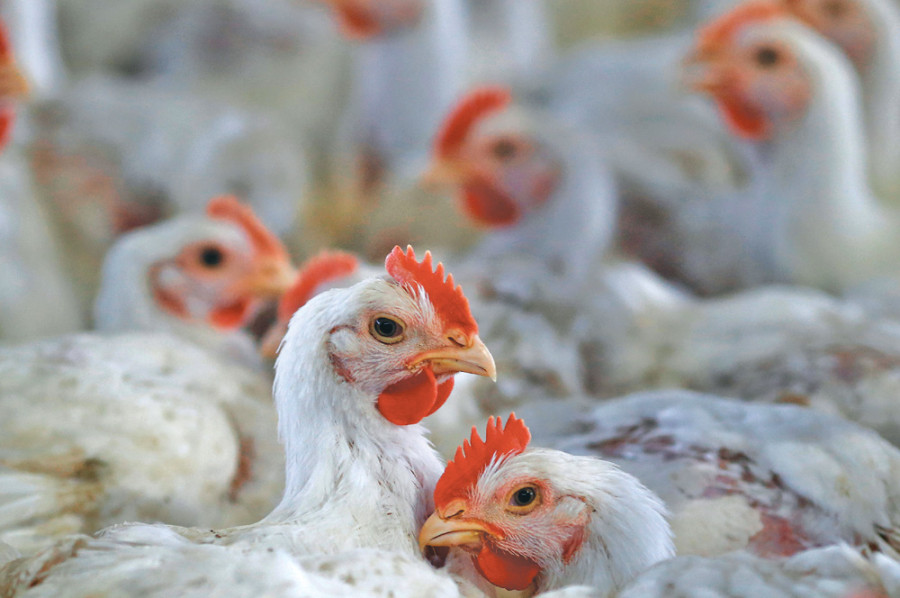Money
Nepal’s poultry industry worth Rs33.72 billion
A Nepali eats 4.1kg per chicken and 44 eggs annually, well below the global average, according to a recent survey report titled “Nepal Commercial Poultry Survey 2014-15” prepared by the Central Bureau of Statistics (CBS).
A Nepali eats 4.1kg per chicken and 44 eggs annually, well below the global average, according to a recent survey report titled “Nepal Commercial Poultry Survey 2014-15” prepared by the Central Bureau of Statistics (CBS).
Commercial production of chicken meat in Nepal stands at 114,058 tonnes annually, while egg output amounts to 1.20 billion sets annually, the CBS report said.
The global average chicken meat consumption is 12kg per person, while average per capita egg consumption is 153 units annually, according to the Food and Agriculture Organisation of the United Nations.
In the South Asia region, Nepal’s per capita chicken consumption is well above India (2.3kg) and Bangladesh (1.4kg), but below Sri Lanka (4.9kg) and Pakistan (4.3kg).
The CBS survey shows Nepal’s poultry industry has an annual turnover of Rs33.72 billion, producing chicken meat worth Rs20.52 billion, eggs worth Rs9.13 billion and chicks worth Rs3.60 billion. Sales of chicken manure amount to Rs453.72 million annually.
Chitwan is the largest producer of poultry products in the country, with the district recording a turnover of Rs10.17 billion. It produces Rs1.97 billion worth of chickens, Rs5.91 billion worth of eggs and Rs2.07 billion worth of fowl. Sales of chicken manure amount to Rs213 million annually.
After Chitwan, Kavre, Dhading, Kathmandu and Kaski are other top chicken producing districts. In terms of eggs, Chitwan tops the chart, followed by Makwanpur, Nawalparasi, Dang and Bhaktapur.
Chickens are produced commercially in 64 districts in the country and 55,871 people are engaged in the business. According to the survey, 75 percent of commercial chicken producers are making profits.
Commercial chicken production in Nepal started in 1974. However, between 2004 and 2013, the country saw a large number of farmers shifting to the poultry business.
Government officials said despite snagging on bird flu outbreaks in the past, the poultry sector has been expanding at a faster rate than expected. Chicken has become widely popular as it is cheaper compared to other meat products. As a result, the poultry market has been growing rapidly despite setbacks. It fulfils around 13 percent of country’s meat requirement.
The survey shows broilers have the highest (12.8) percent mortality rate, followed by layers (9.2 percent) and parents (7 percent).
According to the survey, poultry farmers have suggested the government totally ban illegal import of chicks, offer subsidy for the construction of poultry farm house, and fix the price of chicken and eggs. They have also suggested the government arrange market centres for selling chicken and eggs and provide loans at reasonable rates.




 7.12°C Kathmandu
7.12°C Kathmandu













